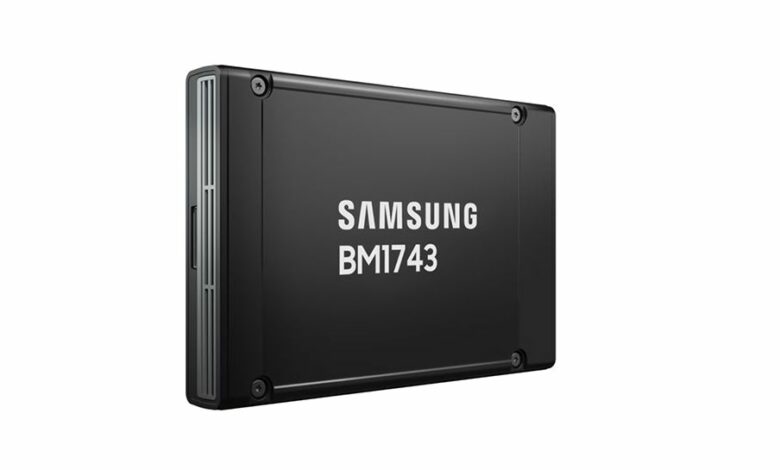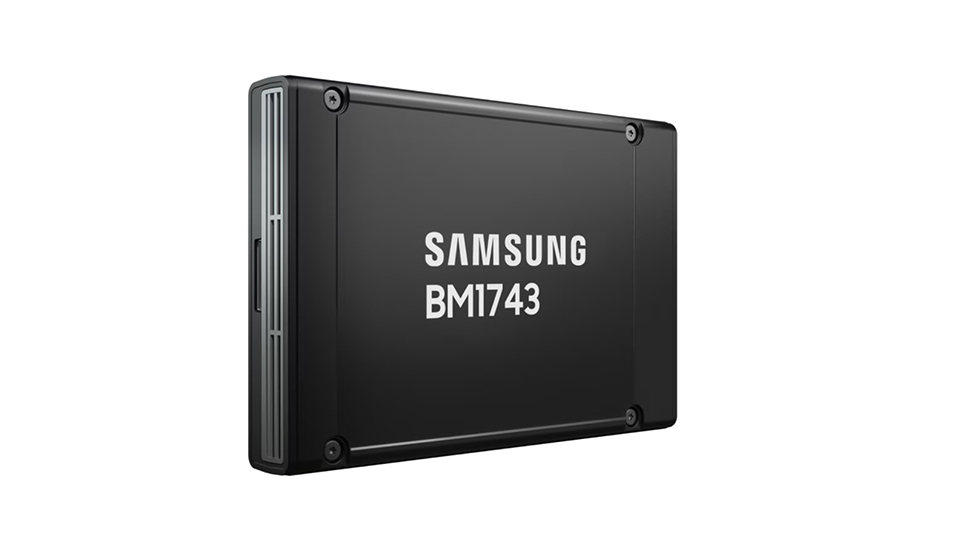Samsung hints at 122.88TB SSD while quietly releasing 61.44TB model — world’s largest NAND maker finally rivals Solidigm for highest capacity crown, but you won’t be able to use it in your PC


Nearly a year after its initial announcement, Solidigm’s 192-layer, 61.44TB PCIe 4.0 NVMe SSD is facing serious competition from Samsung.
The South Korean tech giant has quietly unveiled the BM1743, a 176-layer, 61.44TB SSD made using its 7th-generation QLC V-NAND technology. This nearly doubles the number of layers compared to previous iterations and improves bit density while reducing costs.
While the BM1743 will initially be available in a U.2 form factor (2.5-inch), Samsung says an E3.S variant will also follow that supports PCIe Gen5 for an additional performance boost.
Improved reliability
The BM1743 promises sequential read speeds of up to 7,200MB/s and write speeds of up to 2,000MB/s. Random read and write speeds have also been quadrupled compared to Samsung’s previous BM1733 SSD, released in 2020. Capacity for the BM1743 has seen a huge increase from the 15.36TB of its predecessor, jumping to 61.44TB, with Samsung’s roadmap suggesting an even larger 122.88TB model is in the works.
Samsung’s BM1743 not only increases storage capacity and data transfer speeds, but also demonstrates lower power consumption and improved reliability. The drive writes per day (DWPD) metric has increased from 0.18 to 0.26, and the power-off data retention period has been extended from one month to three months.
Of course, the new drive is not intended for consumer PCs, but for use in data centers. This reduces costs and increases the efficiency of data-intensive operations, which in turn is beneficial for cloud services and AI workloads.
Samsung and Solidigm aren’t the only manufacturers promising large-capacity SSDs. Western Digital also recently announced a 64TB SSD aimed at data storage for AI applications. Part of WD’s extensive Ultrastar DC SN655 enterprise-class lineup, it was announced at Computex 2024 and is expected to arrive later this year. It’s likely only a matter of time before companies like SK hynix, Micron, and Kioxia follow suit and launch their own similarly sized drives.




